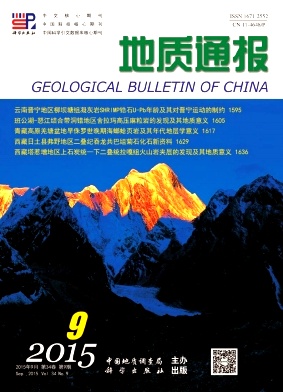QIN Xiaoqun1,2, JIANG Zhongcheng1,2, ZHANG Liankai1, HUANG Qibo1, LIU Pengyu1. The difference of the weathering rate between carbonate rocks and silicate rocks and its effects on the atmospheric CO2 consumption in the Pearl River Basin[J]. Geological Bulletin of China, 2015, 34(09): 1749-1757.
| Citation: |
QIN Xiaoqun1,2, JIANG Zhongcheng1,2, ZHANG Liankai1, HUANG Qibo1, LIU Pengyu1. The difference of the weathering rate between carbonate rocks and silicate rocks and its effects on the atmospheric CO2 consumption in the Pearl River Basin[J]. Geological Bulletin of China, 2015, 34(09): 1749-1757.
|
The difference of the weathering rate between carbonate rocks and silicate rocks and its effects on the atmospheric CO2 consumption in the Pearl River Basin
-
1. Institute of Karst Geology, Chinese Academy of Geological Sciences, Guilin 541004, Guangxi, China; 2. Key Laboratory of Karst Ecosystem and Treatment of Rocky Desertification, Ministry of Land and Resources, Guilin 541004, Guangxi, China
-
Abstract
The chemical and strontium isotopic analytical results of water samples collected four times one year from the eleven stations of the Pearl River showed that, with the rock chemical weathering of either carbonate rocks or silicate rocks, HCO3-, Ca2+ and Mg2+ become the main ionic compositions of the river. The river ion stoichiometric and flux calculation shows that the carbonate rock weathering rate and atmospheric CO2 consumption are 27.60mm/ka and 540.21×103mol/(km2?a-1) respectively, which are 10.8 and 6.7 times the silicate rock weathering rate and atmospheric CO2 consumption respectively, so the carbonate rocks are the main rocks of the chemical weathering and atmospheric CO2 sink in the basin. With the favorable climatic conditions and high carbonate rock ratio of the basin, the mean rock weathering rate and atmospheric CO2 consumption in the Pearl River Basin can reach 30.15 mm/ka and 620.36×103mol/(km2?a-1) respectively. The atmospheric CO2 consumption value is about 2.6 times the average value of the 60 rivers in the world.
-

-
-
Access History







 DownLoad:
DownLoad: